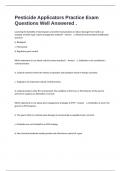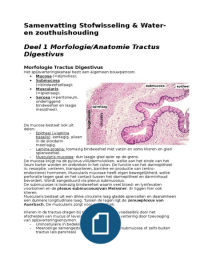Tentamen (uitwerkingen)
Pesticide Applicators Practice Exam Questions Well Answered .
- Vak
- Instelling
Lowering the humidity of stored grains and other food products to reduce damage from mold is an example of which type of pest management method? - Answer a. Physical/environmental modification (correct) b. Biological. c. Mechanical. d. Regulatory pest control. Which statement is true about...
[Meer zien]




